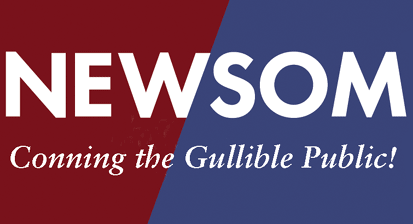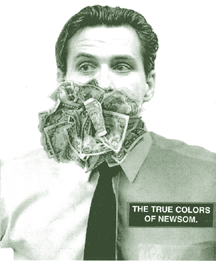|
HOW
SAN FRANCISCO BECAME A WORLD-CLASS CITY
by Silicon Satan
Until
recently, San Francisco was distinguished among the world's
cities by its provinciality. Its puerile left-wing politics,
second-rate cultural institutions and uniquely derivative arts scene
all combined to make San Francisco a laughingstock to sophisticated
people everywhere. Only its fortunate geography and consequent
popularity as a tourist destination saved it from complete obscurity;
and for many years Fisherman's Wharf and Pier 39 were arguably the
city's most significant contributions to the national cultural
landscape.
Left to its own devices, San Francisco would doubtless have remained
a
backwater. Its current status as a world-class city is entirely due
to
its proximity to San Jose, Sunnyvale, Palo Alto and the other
intellectual powerhouses of Silicon Valley. For in the mid 1990's,
while San Francisco's inhabitants were doing whatever it was they
used
to do back thenódefacing their neighborhoods with mural "art,"
protesting the perceived foreign policy atrocity du jour, reading
the
Alzheimer's-inspired ramblings of Herb Caenóa revolution was
brewing
in the southern suburbs that would change the city forever.
A new generation of e-visionaries was daring to dream of an Internet
free from Big Government. Instead of a subsidized talking shop for
academics, computer geeks and conspiracy nuts, the Internet would
be
refashioned as a powerful network of e-commerce solutions, offering
an
unparalleled wealth of quality brand-name products and services, and
all the hassle-free convenience of home shopping. When this vision
of
a liberated, business-friendly Internet soon proved successful beyond
their wildest expectations, Silicon Valley's digital trailblazers
began to seek out new projects worthy of their entrepreneurial energy
and cutting-edge creativity. And before long, their attention turned
to the silly, sleepy little city to the North.
Of course, the ensuing migration of the digerati
to San Francisco and
to the Mission district in particular has been portrayed in the
left-leaning media as something akin to cultural genocide, the
extirpation of a lively community and its arts scene by arrogant,
high-tech "yuppie colonists." Nothing could be further from
the truth.
San Francisco's new digital elite should not be seen as colonists,
but
rather as missionaries of a hip new vision of urban life, striving
with a zeal worthy of Junipero Serra himself to exorcise the demons
of
socialist superstition and bring the city into the new millennium.
For
the over-used term "gentrification" simply does not do justice
to the
changes that are taking place in San Francisco: what we are witnessing
is a cultural renaissance, thanks to which San Francisco is finally
worthy of the moniker "world-class city."
Nowhere is this renaissance more apparent than in the Mission
district, where Silicon Valley's young trendsetters are showing the
world that even the rawest of neighborhoods can be transformed into
a playground of the imagination. Amid the Mission's dilapidated
factories and grubby commercial strips, a vibrant new urban lifestyle
is expressing itself in exquisite restaurants, chic condominiums and
architecturally stunning live-work lofts. And even though the enemies
of progress would have us believe that this is causing the Mission
to
lose its cultural diversity, the opposite is in fact the case. For
what greater champions of cultural diversity than the Missionís
new
cyberpatricians, their taste for French wines, German automobiles,
and international gourmet cuisine heralding a new San Franciscan
cosmopolitanism that is the envy of London, Paris and New York?
|



